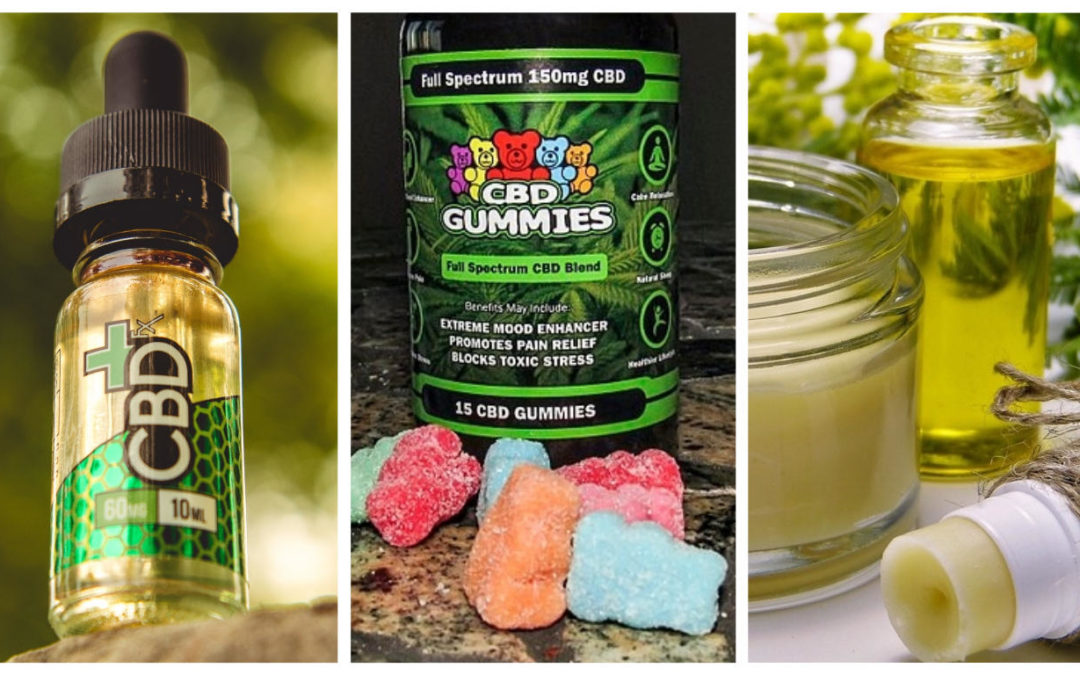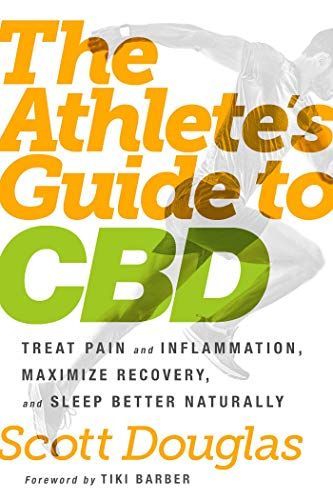Higher potencies and different means of delivery are driving innovation.
Within the ever-expanding overall CBD market, runners and other athletes are increasingly a focus. This emphasis makes sense, when you consider that many of the touted benefits of CBD—pain relief, better sleep, faster recovery, lower inflammation—are of special interest to people who push their bodies hard. Companies are targeting athletes with higher-potency versions of typical CBD products and different ways to deliver CBD.
First, a refresher: CBD stands for cannabidiol, one of more than 100 related compounds called cannabinoids that are found in the cannabis plant. CBD doesn’t produce the high caused by the other most well-known cannabinoid, THC. CBD products sold online and in retail establishments are made from hemp, which by definition is a cannabis plant containing no more than .3 percent THC. As of last year’s farm bill, hemp is no longer classified as a controlled substance under federal law. For a detailed background read on CBD, see this article.
Now, on to the new wave of CBD products for athletes, grouped by the type of innovation. These are all products I’ve tested since writing The Athlete’s Guide to CBD.
Higher Potency Within Typical Products
Two of the main CBD product types are oral tinctures and topical solutions. Tinctures typically come in a 300-milliliter bottle, or just about 1 ounce. You use the supplied dropper to place some of the tincture under your tongue, then keep the tincture in your mouth for 30 to 60 seconds before swallowing. (If someone says “CBD oil,” they’re talking about a tincture.) Topicals come in many consistencies—thick salve, oil, cream, lotion, roll-on, and so on—and in many sizes. Topicals are applied to achy body parts in the hope of delivering targeted pain relief.
When CBD really started hitting the mainstream in 2018, a typical tincture contained 300 to 600 milligrams of CBD. That equals about 30 full-dropper servings in a typical bottle, meaning that one drop of a 600-milligram tincture contains 20 milligrams of CBD. As customers reported benefits from larger daily amounts of CBD, manufacturers responded by making more concentrated tinctures. You can now find 30-milligram tinctures containing 2,000 or more milligrams of CBD; one dropper of an 1,800-milligram-strength tincture provides 60 milligrams of CBD.
Below are three high-potency tinctures I’ve had good results from. (“Results” for me include improved sleep and less overall creakiness from being a 55-year-old who has run more than 110,000 miles over the last 40 years and who is training for a 50-miler.) I appreciate the higher-potency offerings because I’ve gravitated toward a daily CBD sweet spot of 30 to 60 milligrams. If your standard level is lower, the higher-potency tinctures mean you can take a fraction of a dropperful and not have to restock as frequently.
The same more-might-be-better approach is being applied to topicals. A year ago, a 2-ounce container typically contained 200 to 400 milligrams of CBD. Now the same size product might contain 1,000 or more milligrams, and smaller containers contain 500 milligrams or more. The two topicals above are good examples of the extra-strength products now targeted to athletes.
Altering CBD Within Typical Products
The CBD molecule is fat-soluble and relatively large. It doesn’t travel efficiently within the body’s mostly-water environment. Some estimates claim that only 8 to 10 percent of the CBD you consume in a tincture survives metabolism to be available within your body.
To address this problem, some companies try to change how the CBD molecule moves through your body. In extremely simplified terms, different processes are applied to CBD to shrink its particle size. Theoretically, creating these nano particles results in greater absorption. Tinctures made this way usually contain 300 milligrams of CBD per bottle, but, it’s claimed, provide as much or more net CBD as conventional tinctures of higher potency.
As with so many things in the CBD world, these claims are so far supported more by anecdote than vigorous clinical studies. My anecdote is that I felt a more immediate effect—mostly of calm and mental clarity—from the nano products below than from most other tinctures.
Another approach is to create products that contain a CBD derivative. A little science: CBD and THC aren’t present in the cannabis plant. Instead, the plant makes acidic precursors, known as CBDa and THCa, which become their better-known form when the plant is dried or processed.
A Virginia-based company, ChlyoCure, binds CBDa with magnesium to create a topical cream. This process results in a product that appears to be 1,000 times more potent than traditional CBD topicals, says Scott Palmer, M.D., one of the company’s founders and a team physician for the Chicago Bulls and Chicago White Sox.
ChyloCure hasn’t yet produced lab results proving the claim of greater effective potency. In my experiment of one last winter, it worked. Running on icy, slanted roads made me chronically sore and achy. The ChyloCure cream provided relief I didn’t feel when using conventional CBD topicals.
Adding CBD to Other Product Types
Floyd’s of Leadville has been a leader in creating new athlete-focused products. The brand, founded by Floyd Landis, who was stripped of his 2006 Tour de France title for doping, unveiled recovery bars over the summer. Each bar contains 25 milligrams. The bars’ taste and texture are pleasantly similar to a homemade nut butter/seed bar.
Ashlee’s Powers is a new CBD brand created by Ashlee Powers, a 34:26 10K runner based in Los Angeles. Its recovery bar contains 20 milligrams of CBD as well as collagen peptides and spirulina. It has a gooier, more chocolate flavor than the Floyd’s bar. Both taste good enough to eat for their own sake.
Same with this honey by Grassroots Harvest, each teaspoon of which contains approximately 15 milligrams of CBD. I found the cannabis flavor added a nice, earthy undertone. Given the price, this is a honey to be used selectively rather than eaten by the spoonful post-long run.
Incorporating CBD into liquids that athletes typically drink is a relatively new endeavor. Sometimes there’s a metallic or off taste that distracts from simply enjoying what you’re drinking. Of the ones below, PLNT’s juice drinks most taste like something I’d want to drink if they didn’t contain CBD.
If you want caffeine with your CBD, there’s coffee from Willie’s Remedy. (That’s Willie as in music legend Willie Nelson.) The brand also offers green and black tea. The coffee has 240 milligrams of CBD per 8-ounce bag, the loose-leaf teas contain 300 milligrams per 3-ounce container. In all the Willie’s Remedy drinks, the cannabis flavor adds a nice element to the expected taste rather than overwhelming it.
A non-edible approach is to add CBD to skincare products. We’re all supposed to wear sunscreen; this one by Divios, with an SPF of 30, isn’t greasy, smells nice, and contains 240 milligrams of CBD. Finally, there’s this on-skin approach, a roughly 2”-by-3” patch from Hath that transmits 35 milligrams over the course of several hours. The patches I tested stayed on during even the sweatiest summer runs.




















Recent Comments